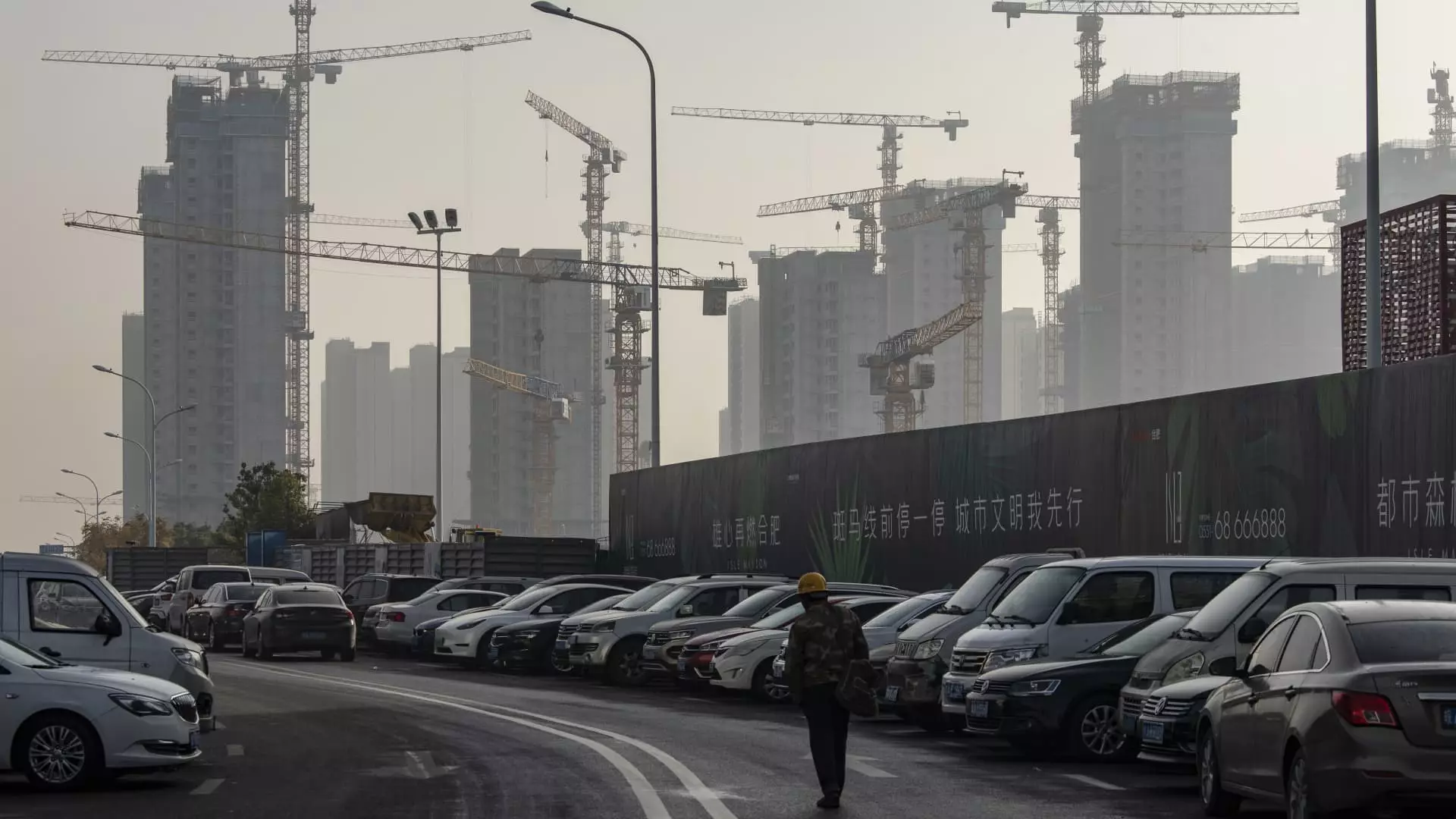The state of China’s real estate market has been a focal point for analysts and policymakers alike, particularly as declining prices and waning consumer confidence have raised alarms about the fundamental health of this critical sector. With predictions that recovery may not manifest until the latter half of 2025, the implications for both the economic landscape and the average consumer are profound. This article delves into the nuances of the situation, examining the effectiveness of recent measures and the broader economic ramifications.
China’s real estate sector has long been regarded as a linchpin of its economic growth, accounting for over a quarter of the country’s gross domestic product (GDP). However, recent economic indicators signal troubling trends. The recent reports from firms like Goldman Sachs, S&P Global Ratings, and Morgan Stanley indicate an ongoing downward trajectory that could stretch through at least 2025. Analysts suggest that even with recent stimulus measures introduced by the government, substantial improvement is still on the horizon.
The government’s focus on stabilizing the real estate market has been met with a mixture of cautious optimism and skepticism. Economic growth has been noticeably slower, leading to a decline in consumer demand for new homes. Consequently, developers are left grappling with an oversupply of inventory, which has driven homeowners to renegotiate prices and terms. As a result, the fear of deteriorating asset values looms large, leading to a perpetuated cycle of hesitance among potential buyers.
Recently adopted fiscal policies have sought to create a more favorable environment for developers, with pledges to invest approximately 8 trillion yuan (around $1.12 trillion) in support measures. Government officials assert that stabilizing the market takes precedence over populating it with potentially unsustainable financial commitments. This strategic focus raises questions about the adequacy and timely execution of these policies.
It is worth noting that China’s approach has shifted dramatically following the crackdown on developers’ reliance on debt. The previous model of pre-sold homes was seen as both lucrative and sustainable until economic realities hit hard. Now, an estimated 20 million homes remain incomplete, a significant statistic that signifies the breadth of the challenges ahead. Government measures, including financial support for unsold properties and accelerated construction timelines, may mitigate immediate pressure but ultimately reveal a deeper systemic issue.
Looking forward, the forecasts from research entities suggest property prices might stabilize by late 2025, with a potential mild increase of 2% anticipated two years thereafter. However, Goldman Sachs emphasizes that property sales and new constructions will likely remain subdued until 2027. Such insights compel homebuyers and investors to reevaluate their financial strategies, as immediate rebounds are deemed unlikely.
More crucially, these forecasts imply a re-evaluation of consumer expectations. Many potential homeowners had previously adopted an optimistic outlook, spurred by rapid price increases and a robust demand for housing. Now, as confidence wanes, the possibility of further price declines—potentially up to 25%—presents a stark reminder of the market’s volatility.
The precarious situation has undeniably impacted consumer sentiment. Recent data shows a contraction of sales in major cities, which only underscores this reality. While there’s been a slight improvement compared to an earlier plunge, the overall activity still lags significantly behind pre-crisis levels. This compounded pressure makes it clear that consumer confidence has not merely faltered; it is in a state of reevaluation and refinement.
Moreover, the lingering issue of unsold inventory constricts developer capabilities, thereby exacerbating a vicious cycle of pessimism. Developers, spurned from robust sales and a fair market value for their properties, are adopting an ultra-cautious approach to land acquisition. As new constructions diminish — plummeting by approximately 23% from the levels of the previous year — the real estate market faces yet another layer of complexity.
The trajectory of China’s real estate sector remains uncertain as it grapples with multifaceted challenges. Although government intervention indicates a commitment to rectifying the situation, critical analyses reveal that these measures may only serve as temporary relief. With predictions centered around a protracted recovery process leading into 2025 and beyond, stakeholders must brace for a transformed market landscape.
Ultimately, the interplay between government policy, consumer sentiment, and developer capabilities is bound to be complicated and dynamic. As China stands at a critical juncture, both the economy and the housing market await a viable pathway to resilience and stability. The task at hand is no small feat, and whether the nation can rebound remains to be seen.


Leave a Reply